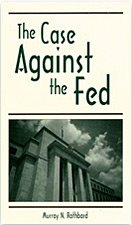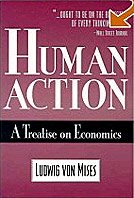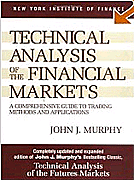James Turk: Print, Print, Print
GoldMoney founder, Freemarket Gold & Money Report editor, and GATA consultant James Turk remarks in his latest essay that the European Central Bank's conjuring of the equivalent of a half trillion dollars overnight is a flashing neon sign on the road back to Weimarism.
Print, Print, Print
In case you missed this news, the European Central Bank yesterday created 348 billion euros. That's equal to about one-half trillion dollars. Presto! Like magic, one-half trillion dollars of so-called "liquidity" appeared out of thin air.
It really isn't liquidity though. Let's call it what it really is. It's just newly 'printed' currency, created not with a printing press, but rather, with a simple book entry on the ECB's balance sheet.
Let's flash back to Weimar Germany in 1923. As that country's monetary problems worsened, the central bank, the Reichsbank, in the misguided thinking of that day printed one-half trillion of Reichsmarks. It also had the aim to provide liquidity.
Is there anything essentially different between what the Reichsbank did and what the ECB just did? Absolutely not.
Last week I wrote the following for one of my regular commentaries on the Kitco website, responding to the $40 billion of new currency that had just been 'printed' in an instant by the Federal Reserve: "Creating money this way is a barbaric process because it further debases the dollar, but is hailed by the banking insiders and their apologists as a brilliant maneuver to fight the worsening liquidity crunch. Of course it is a view of those with vested interests, and bluntly, is just their selling pitch to the masses."
We are in a monetary crisis, not unlike the one that plagued Weimar Germany. It is a crisis of fiat currency, where 'money' can be created out of thin air in an instant and in any quantity, which are actions that cause people to distrust the money. This lowers the demand for the debased money, and eventually leads to a flight from it. The demand for the Reichsmark was declining for years before its collapse, just like the demand for the dollar, euro and other fiat currencies is now declining as people seek safe alternatives.
Over the past few weeks John Rubino and I have been updating our book, The Coming Collapse of the Dollar, for a new paperback version that Doubleday plans to release in January. Not only has the content been updated, but Doubleday wants to update the title too. The proposed new title is: "The Collapse of the Dollar", to reflect the downward path of the dollar since writing our book back in 2004. The following is from the introduction to this new version:
"The stage is set, in short, for not just a further decline in the value of the dollar, but a collapse. Which means the turmoil-and profit opportunities-of the past few years were just a taste of what's coming. But note that despite the title of this book, it's not only the dollar that's headed for the trash heap of history. The real problem isn't U.S. economic mismanagement, but the whole concept of fiat currencies. Put simply, when politicians have the ability to buy votes by printing money, they do so. This lack of monetary discipline leads to an oversupply of currency which causes its value to decline until most citizens give up on it altogether. In the past this has happened to one country at a time, but today it's happening everywhere, with the world's dominant currency, the dollar, leading the way. The inevitable result will be a tumultuous few years in which the world discovers that fiat currencies -i.e., government-created-and-controlled currencies with no externally-imposed discipline on the printing press-are inherently flawed, and abandons them en mass."
As 2007 comes to an end, it is time to think about what lays ahead in the New Year. My conclusion is that the present crisis is going to get much worse and then end badly. How badly?
Well, no one of course can predict the future, but when you are on a road, you can obviously see where you are going. The dollar, euro and the other national currencies are on a road that is well traveled. We know where it is going. It's the same road the Reichsmark was traveling.
It's the road to the fiat currency graveyard.
Labels: central banks, fiat money, James Turk, money















![[Most Recent Quotes from www.kitco.com] [Most Recent Quotes from www.kitco.com]](http://www.kitco.com/images/live/t24_au_en_usoz_6.gif)
![[Most Recent Quotes from www.kitco.com] [Most Recent Quotes from www.kitco.com]](http://www.kitco.com/images/live/au_go_0030_ny.gif)
![[Most Recent Quotes from www.kitco.com] [Most Recent Quotes from www.kitco.com]](http://www.kitco.com/images/live/au_go_0365_ny.gif)
![[Most Recent Quotes from www.kitco.com] [Most Recent Quotes from www.kitco.com]](http://kitconet.com/charts/metals/silver/t24_ag_en_usoz_4.gif)

















0 ΣΧΟΛΙΑ (COMMENTS):
Post a Comment
<< Home